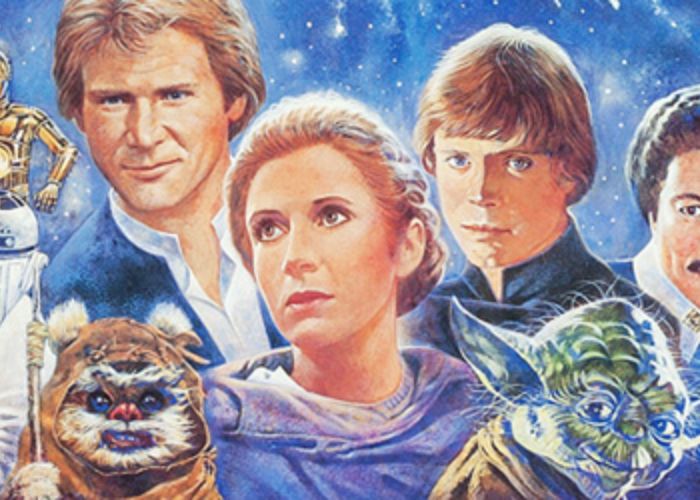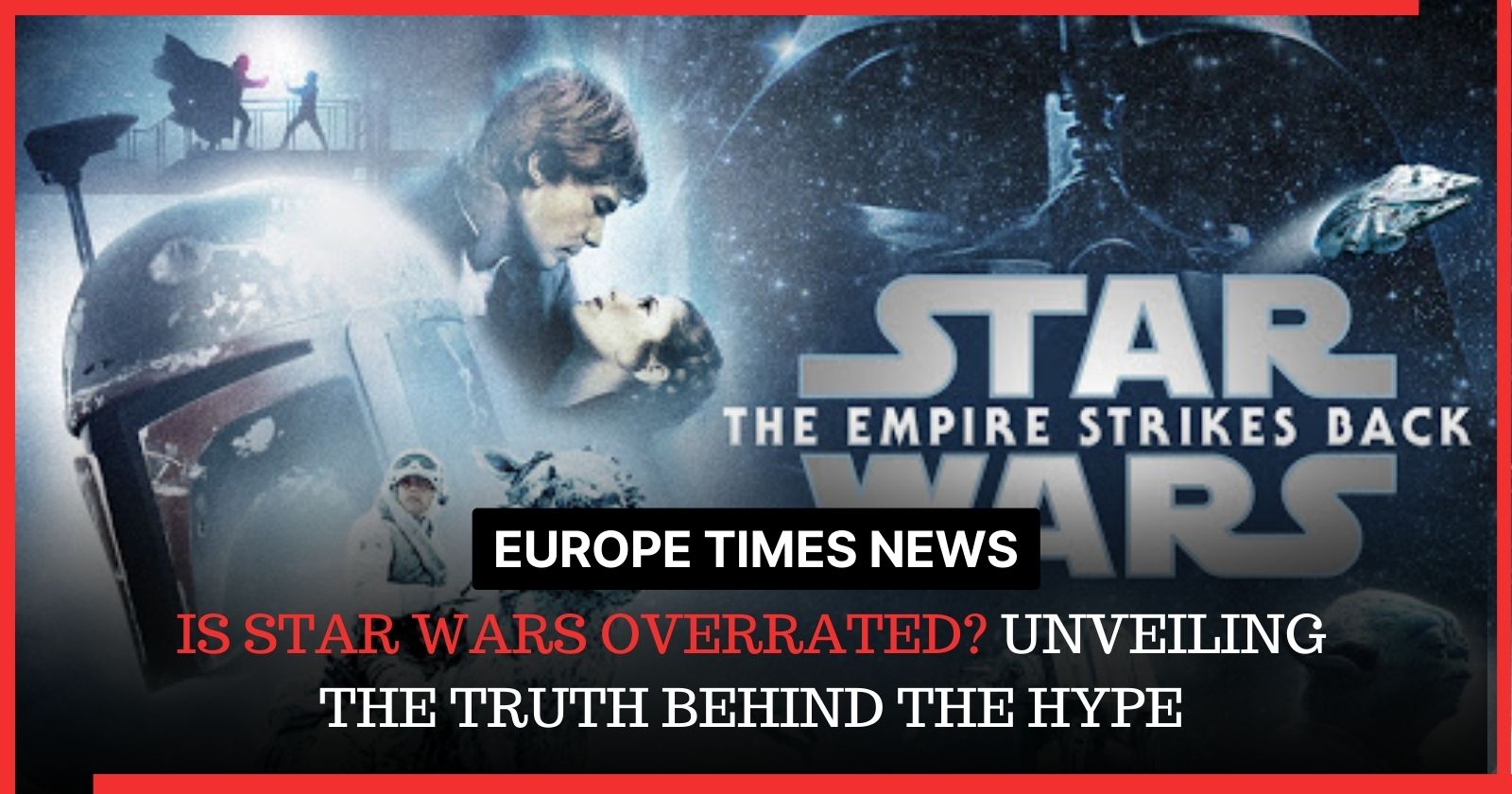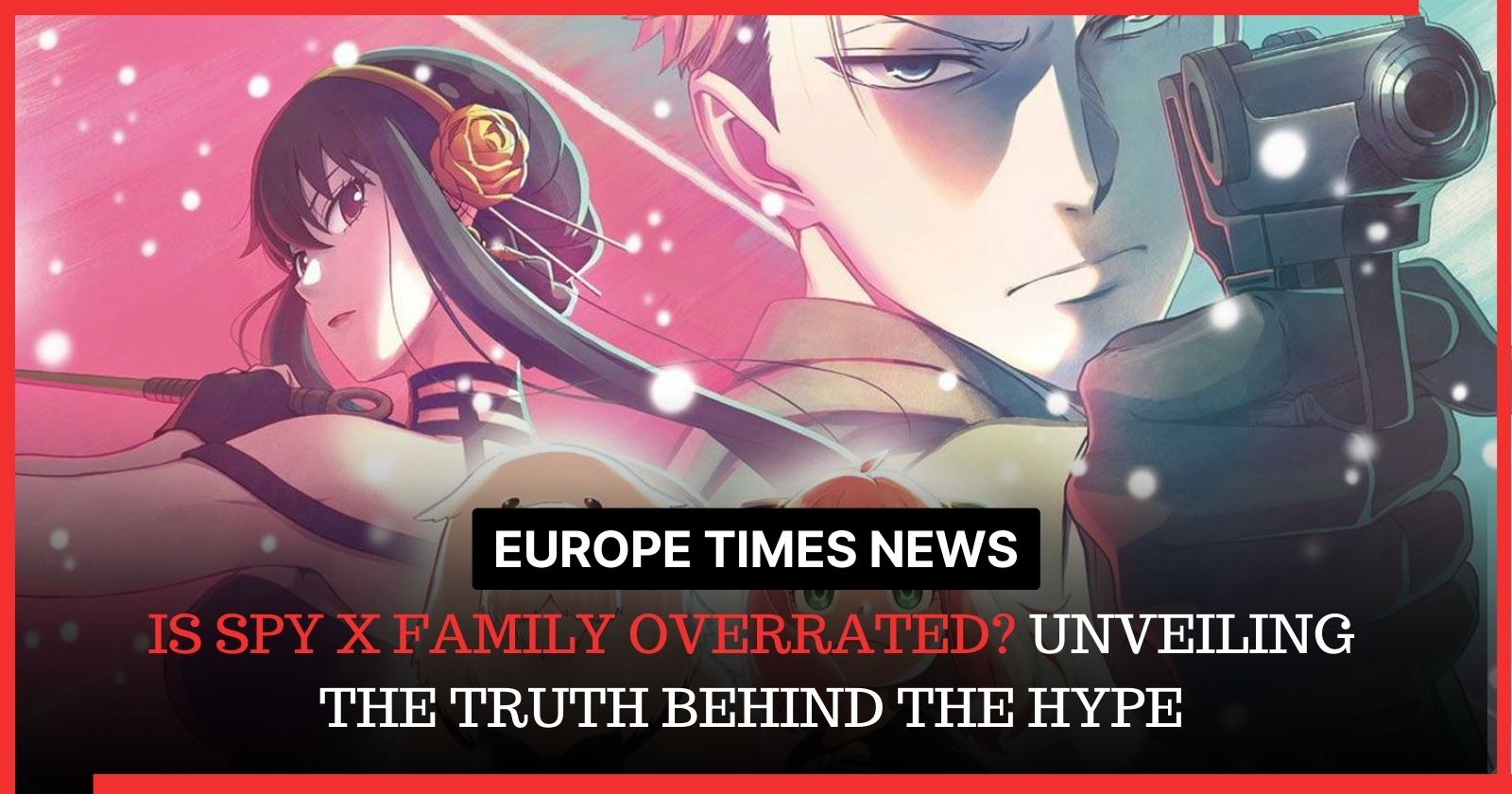Is Star Wars overrated? No, star war is not overrated. This question has sparked countless debates among fans and critics alike. While some argue that the franchise is a timeless masterpiece, others claim it is overhyped.
In this article, we will explore both sides of the argument and provide insight into whether Star Wars truly lives up to its legendary status or if it falls short of expectations. So, let’s dive in and uncover the truth behind one of the most divisive questions in pop culture history.
Table of Contents
Is Star Wars Overrated?

The Cultural Impact of Star Wars
Star Wars has undeniably left a lasting cultural impact since its release in 1977. Here are some key points highlighting the influence and significance of this iconic franchise:
- Revolutionizing Special Effects: Star Wars revolutionized the film industry with its groundbreaking special effects, particularly in space battles and lightsaber duels. It set new standards for visual storytelling, pushing the boundaries of what was possible onscreen.
- Influencing Pop Culture: Star Wars became an integral part of pop culture, permeating various forms of media such as TV shows, books, comics, video games, and merchandise. Its characters like Darth Vader and Yoda have become instantly recognizable icons worldwide.
- Expanding Science Fiction: As one of the most successful science fiction franchises ever created, Star Wars expanded the genre’s appeal to a broader audience beyond hardcore fans. Its blend of fantasy elements with futuristic technology captivated millions around the globe.
- Epic Storytelling: The epic saga spanning multiple films captured audiences’ imagination with its compelling narrative arc centered around themes like good versus evil, redemption, and hope against all odds. It resonated deeply with viewers across generations.
- Diverse Characters: Star Wars introduced diverse characters that broke traditional stereotypes at a time when representation was limited in mainstream media. Characters like Princess Leia Organa challenged gender roles while Lando Calrissian showcased racial diversity within the galaxy far, far away.
- Memorable Quotes: The franchise is filled with memorable lines that have become ingrained in popular culture: “May the Force be with you,” “I am your father,” or “Do or do not; there is no try.” These quotes continue to be referenced both humorously and seriously throughout various contexts.
- Inspiring Fan Communities: Star Wars sparked passionate fan communities who engage through conventions (such as Star Wars Celebration), cosplay, fan fiction, and online discussions. The franchise’s impact extends beyond the screen, fostering a sense of belonging and connection among enthusiasts.
In conclusion, Star Wars has had an immense cultural impact that reverberates to this day. Its influence on filmmaking techniques, pop culture references, and expanding science fiction cannot be overstated. By introducing diverse characters and captivating storytelling, Star Wars continues to inspire generations of fans worldwide.
Why Star Wars Became a Phenomenon
Star Wars, without a doubt, has become one of the most culturally significant film franchises in history. The reasons behind its rise to phenomenon status can be attributed to several key factors:
- Groundbreaking Visual Effects: Released in 1977, the original Star Wars film revolutionized the film industry with its cutting-edge special effects. Audiences were captivated by the realistic space battles, futuristic landscapes, and lifelike characters brought to life through groundbreaking techniques.
- Epic Storytelling: George Lucas created an expansive and immersive universe filled with compelling characters and an epic narrative that resonated with audiences across generations. The battle between good and evil, the hero’s journey of Luke Skywalker, and themes of hope and redemption struck a chord with viewers worldwide.
- Memorable Characters: Star Wars introduced us to iconic characters like Darth Vader, Han Solo, Princess Leia, Yoda, and many more who quickly became cultural icons. Each character had their own unique personality traits that made them relatable and memorable.
- Captivating Soundtrack: John Williams’ legendary musical score is instantly recognizable around the globe. The powerful orchestral compositions added depth and emotion to every scene while becoming synonymous with Star Wars itself.
- Expanding Universe: Through sequels, prequels, spin-offs, books, comics,and animated series; Star Wars expanded beyond just films into a vast multimedia franchise which allowed fans to explore different eras within the galaxy far far away.
- Dedicated Fanbase: Over four decades since its inception,
Star Wars has garnered a passionate fanbase known for their unwavering dedication.The fandom organizes conventions (such as “Star Wars Celebration”), cosplay events,and countless online discussions where enthusiasts share theories about their favorite characters or debate various aspects of this beloved saga.
In summary,the combination of groundbreaking visual effects,epic storytelling,unforgettable characters,and a dedicated fanbase are key factors that propelled Star Wars to become the phenomenon it is today.

The Evolution of the Star Wars Franchise
1. A New Hope (1977):
Introduced audiences to a galaxy far, far away and set the foundation for what would become an iconic franchise.
Groundbreaking special effects, memorable characters like Luke Skywalker and Darth Vader, and an epic battle between good and evil captivated audiences worldwide.
2. The Empire Strikes Back (1980):
Considered by many as the best installment in the series.
Expanded the story with new planets, introduced Yoda, revealed Darth Vader’s true identity, and ended on a cliffhanger that left fans eagerly waiting for more.
3. Return of the Jedi (1983):
Wrapped up the original trilogy with a final confrontation between the Rebel Alliance and Emperor Palpatine.
Introduced Endor’s forest moon setting and showcased redemption arcs for key characters.
| Episode | Title | Release Year |
|---|---|---|
| IV | A New Hope | 1977 |
| V | The Empire Strikes Back | 1980 |
| VI | Return of the Jedi | 1983 |
4. Prequel Trilogy (1999-2005):
- Episode I: The Phantom Menace (1999)
- Episode II: Attack of the Clones (2002)
- Episode III: Revenge of the Sith (2005)
– Showcased Anakin Skywalker’s journey towards becoming Darth Vader
– Explored political intrigue within Republic
– Received mixed reactions from fans due to certain creative choices but expanded universe lore.
5. Sequel Trilogy:
- Episode VII: The Force Awakens(2015)
- Episode VIII: The Last Jedi (2017)
- Episode IX: The Rise of Skywalker (2019)
– Introduced a new generation of characters such as Rey, Finn, and Kylo Ren.
– Received mixed reactions from fans regarding storylines and character development.
6. Standalone Films:
Rogue One: A Star Wars Story (2016): Explored the events leading up to A New Hope with a focus on the Rebel Alliance’s mission to obtain the Death Star plans.
Solo: A Star Wars Story (2018): Provided backstory for beloved character Han Solo and his early adventures.
The Star Wars franchise has evolved over time, expanding its universe through trilogies, standalone films, animated series like The Clone Wars, and spin-off novels/comics. With each iteration offering something different, it continues to capture the imaginations of both dedicated fans and newcomers alike.
Critics’ Perspectives on Star Wars
- Many film critics have shared their opinions on whether Star Wars is overrated or not. Here are some key points from their perspectives:
- The Cultural Impact: Critics often acknowledge the significant cultural impact that Star Wars has had since its release in 1977. The franchise revolutionized the science fiction genre and introduced groundbreaking visual effects, captivating audiences worldwide.
- Influence on Pop Culture: Star Wars has undeniably left a lasting imprint on pop culture, with iconic characters like Luke Skywalker, Darth Vader, and Princess Leia becoming household names. Some critics argue that this widespread recognition may contribute to an inflated perception of the franchise’s overall quality.
- Nostalgia Factor: With multiple sequels, prequels, spin-offs, and a constant presence in popular media, some critics claim that Star Wars relies heavily on nostalgia to maintain its popularity rather than consistently delivering groundbreaking storytelling or original concepts.
- Varying Quality: While many fans consider the original trilogy (Episodes IV-VI) as cinematic masterpieces, there is ongoing debate among critics about the quality of subsequent films in terms of writing and execution.
- Fan Bias: Critics also analyze how passionate fan communities can influence perceptions of a film series like Star Wars. They assert that intense fandom can sometimes cloud critical judgment and lead to overly positive reviews based more on emotional attachment than objective assessment.
- Genre Limitations: A few critics argue that despite its immense success within the sci-fi/fantasy genre, Star Wars might not reach certain artistic heights when compared to other critically acclaimed films outside this category.
It is important to note that these perspectives do not represent a consensus opinion but reflect diverse viewpoints within film criticism circles regarding whether or not Star Wars is overrated.

Fan Theories and Speculations about Star Wars
Darth Jar Jar Theory: One of the most controversial fan theories is the infamous Darth Jar Jar theory. This theory suggests that the bumbling Gungan, Jar Jar Binks, was actually a Sith Lord in disguise and playing a key role in Palpatine’s rise to power. While this theory gained a lot of attention online, it was ultimately debunked by George Lucas himself.
Rey’s Parentage: Another hotly debated topic among Star Wars fans is Rey’s parentage. Many speculated that she must be related to either Luke Skywalker or Obi-Wan Kenobi due to her strong connection with the Force. However, “The Last Jedi” revealed that Rey’s parents were nobodies, adding an unexpected twist to her character arc.
Snoke’s Identity: Supreme Leader Snoke sparked numerous speculations regarding his true identity and origins. Some believed he could be Darth Plagueis or even Mace Windu who survived his supposed demise in “Revenge of the Sith.” Unfortunately, “The Rise of Skywalker” left many fans disappointed as Snoke’s backstory remained largely unexplored.
- The Chosen One Prophecy: The prophecy of “the chosen one” has been a recurring theme throughout the Star Wars saga. Anakin Skywalker was believed to be fulfill it by bringing balance to the Force. However, some fans argue that it was actually Luke Skywalker who achieved this balance by redeeming Vader and defeating Emperor Palpatine.
- Time Travel Theory: A lesser-known speculation suggests that time travel may exist in the Star Wars universe. Some theorists point out instances where characters seemingly interact across different timelines or manipulate events from their past selves’ perspectives.
| Fan Theory | Explanation |
|---|---|
| Darth Jar Jar | Controversial theory suggesting bumbling Jar Jar Binks was a Sith Lord aiding Palpatine’s rise to power. |
| Rey’s Parentage | Debate over the true identity of Rey’s parents, later revealed to be nobodies in “The Last Jedi.” |
| Snoke’s Identity | Speculation surrounding Supreme Leader Snoke’s origins and backstory left unexplored in “The Rise of Skywalker.” |
| Chosen One Prophecy | Discussion on whether Anakin or Luke Skywalker fulfilled the prophecy of bringing balance to the Force. |
| Time Travel Theory | Theory proposing the existence of time travel within the Star Wars universe. |
These fan theories and speculations have fueled countless discussions among Star Wars enthusiasts, highlighting the enduring fascination with this beloved franchise. While some theories have been confirmed or disproven by official sources, others continue to captivate fans’ imaginations, keeping the spirit of speculation alive within the Star Wars community.
Star Wars Merchandise: A Billion-Dollar Industry
Star Wars has not only captured the hearts of millions of fans worldwide, but it has also unleashed a merchandising empire that continues to thrive. Here are some key facts about the lucrative world of Star Wars merchandise:
A Force to Be Reckoned With: The franchise’s immense popularity has propelled its merchandise sales into astronomical figures. In fact, Star Wars merchandise is estimated to be worth billions of dollars annually.
From Action Figures to Apparel: One cannot talk about Star Wars merchandise without mentioning action figures. These collectible toys have been a staple since the release of the first movie in 1977 and continue to be highly sought after by both children and adult collectors alike. However, the range of products goes far beyond just action figures; it includes clothing, accessories, home decor items, video games, books, and even kitchenware.
Iconic Characters Fuel Demand: The diverse cast of characters in Star Wars contributes significantly to its commercial success. From Darth Vader’s menacing presence to Yoda’s wise teachings and BB-8’s adorable charm, each character captivates audiences in their own unique way – making them prime subjects for merchandise designs.
Limited Editions and Exclusive Releases: To keep fans engaged and create a sense of exclusivity, limited edition releases play an essential role in the world of Star Wars merchandise. Whether it’s special editions commemorating anniversaries or exclusive collaborations with renowned brands like Adidas or LEGO®, these limited runs drive up demand among collectors who eagerly snatch up these coveted items.
Expanding Beyond Movies: While movies remain at the core of the franchise’s success story when it comes to merchandising opportunities extend far beyond cinematic releases alone., Animated series like “The Clone Wars” and “Rebels,” as well as spin-off projects such as “The Mandalorian,” have expanded the Star Wars universe and provided new avenues for merchandise development.
The Star Wars franchise has undoubtedly left an indelible mark on popular culture, and its merchandise empire is a testament to its enduring appeal. As fans await each new installment, they eagerly anticipate not only the cinematic experience but also the opportunity to bring their favorite characters and stories into their own lives through an ever-expanding range of products.

Revisiting Star Wars: Is It Still Relevant Today?
1. The cultural impact of Star Wars
Star Wars, since its release in 1977, has had an immense cultural impact on society.
The franchise’s iconic characters, such as Luke Skywalker and Darth Vader, have become household names.
Its groundbreaking special effects revolutionized the film industry and set new standards for sci-fi movies.
2. A timeless tale of good vs. evil
At its core, Star Wars tells a timeless story of the battle between good and evil.
This theme resonates with audiences across generations and continues to captivate viewers today.
3. Expanding beyond the silver screen
While initially known as a film series, Star Wars has expanded into various forms of media over the years. Medium Examples TV Shows “The Mandalorian,” “Star Wars: The Clone Wars” Books Novels, graphic novels Video Games “Star Wars Jedi: Fallen Order,” “Battlefront II”
4. Inspiring future generations
Many people who grew up watching Star Wars have been inspired by its imaginative universe.
Countless individuals pursued careers in filmmaking or other creative fields because of their love for the franchise.
5. Evolving storytelling techniques
With each new installment, Star Wars pushes the boundaries of storytelling techniques.
From introducing complex character arcs to exploring deeper themes like redemption and sacrifice,
it ensures that even long-time fans find something fresh and exciting.
Despite being around for over four decades now, Star Wars remains relevant due to its cultural impact,
timeless storylines, expansion into different media formats, and continued ability to inspire both current and future generations.
Conclusion: Is Star Wars Overrated?
In conclusion, while some may argue that Star Wars is overrated, it is undeniable that the franchise has had a significant impact on popular culture and storytelling. From its groundbreaking special effects to its memorable characters and epic space opera narrative, Star Wars has captured the hearts of millions around the world.
Despite criticisms of certain films or storylines within the franchise, Star Wars continues to inspire new generations of fans with its timeless themes of hope, redemption, and the battle between good and evil. The enduring popularity of Star Wars merchandise, conventions, and fan communities further demonstrate its lasting cultural influence.
While personal opinions may vary regarding whether Star Wars deserves all the acclaim it receives, there’s no denying its status as a pop culture phenomenon. Whether you’re a die-hard fan or a casual viewer, there’s no denying that Star Wars has left an indelible mark on cinema history and will continue to be celebrated for years to come. I hope you find the article “Is Star Wars Overrated” helpful.
Also Read: Is Stranger Things Overrated?


